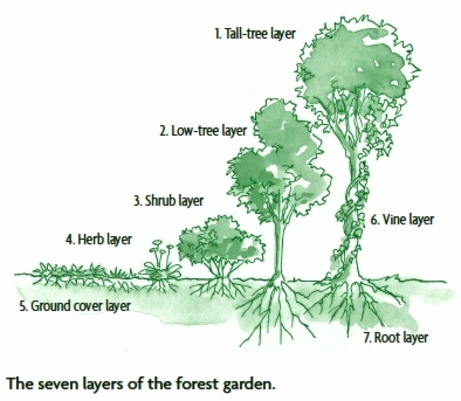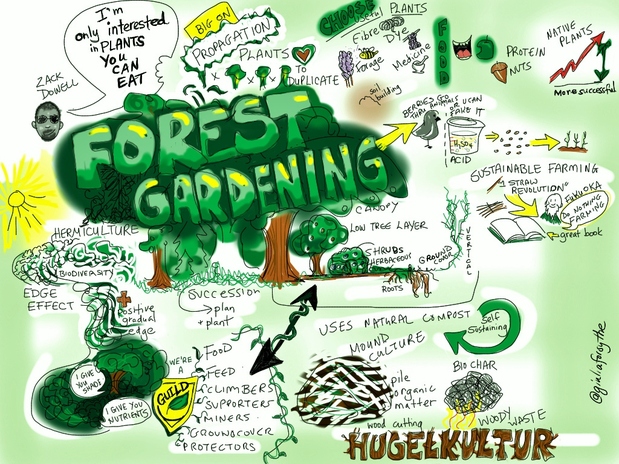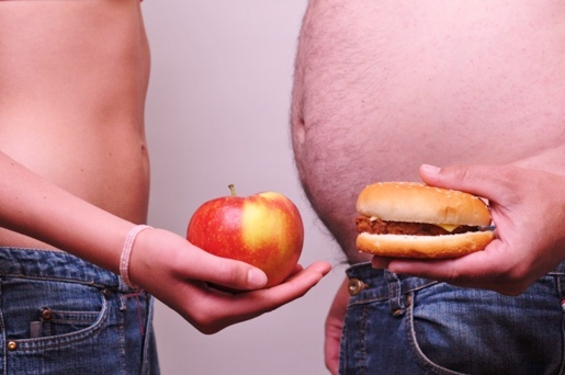Humans are designed to eat juicy, sweet, colorful, rainforest fruit - the embodiment of the ideal human food: easily digestible; remarkably assimilable - providing vital vitamins and minerals, a wide array of phytochemicals; protecting against destructive oxidation and epigenetic degeneration(1.), bestowing a beautiful tan (2) and a vibrant, youthful complexation, a mean protein content resembling mother's-milk (3), a delightful taste, appearance and aroma; pleasing the senses, enjoyable without human adulteration, whilst decreasing the prevalent dehydration found amongst the majority of the population; high water concentration.
Abundant enjoyment of fruits decreases the formation of inflammation enhancing the performance of the lymphatic system(4.), aiding the body in the process of removing toxins and metabolic waste; avoiding the proliferation of interstitial constipation(5.); which fosters dis-ease and pain.
A smooth, unconstrained, lymphatic flow promises a pleasing experience of activity and exercise; devoid of unnecessary, unpleasant, constriction.
Fruit centered eating patterns promote the development of trees; agro-forestry and forest-gardening represent the viable future of human food production, since fruit bestows annual abundance: minimizing the employment of intensive labor (perennial production), commercial fertilizers (obsolete in a sustainable ecosystem), irrigation systems (far less water consumption) and artificial pesticides (need-less in a sustainable ecosystem), whilst trees significantly cool the planet by virtue of carbon dioxide absorption and shade generation. The vertical constellation of forests and the perennial nature of agroforestry productions; infers efficiency and ecological supremacy
The misconceptions, misunderstandings and downright falsities voiced regarding fruit: reflect supreme ignorance and banality; the opinions express standard superficiality:
Firstly, the human body is designed for movement and assimilation of unprocessed fruit: most people live a sedentary life, in conjunction with the consumption of vast quantities of refined foods, paving the way for intolerance of sweet fruits; a biologically and evolutionarily disconnected lifestyle, instigates the bizarre and unnatural modern affliction: affecting a minority of the population, fortunately the condition is entirely reversible.
The human body performs superior sustained movement with a diet rich in (unrefined) carbohydrates; and the human physical structure is invariably designed for movement. Every cell in the body is fueled by glucose; a requisite for the production of ATP in the cells.
The simple sugars found within fruit act as superior fuel sources, since conversion (fat and protein) or de-construction processes (starch; into simple sugar) are unnecessary for the generation of energy.
Secondly, the microflora in the average human gut remains severely dysfunctional(6.); transforming the colloidal or floral (bacterial) life in the gut is a gradual process. The consumption of large amounts of fermentable fiber and phytochemicals favors micro-probiotics(7.), radically altering the performance of the gastrointestinal-tract (and the entire body); generating exceptionally rapid and effective digestion and assimilation, whilst intestines properly colonized by symbiotic microbes produce amino acids(8.), fatty acids, K2 and B vitamins and provide synergistic antioxidant activity.
Dilettantes often suspect fruit sugar if cavities emerge in an individual following a fruit centered diet; however, cavities are caused by disbiotic bacteria and the inability of the saliva to neutralize acids. (See, Dental issues ; Dental excellence)
In some individuals with a previous history of dis-ease; problems might surface during the transition phase, since the body is undergoing systemic renovation; establishing lasting regeneration (for instance, trillions of novel microprobiotics are repopulating the gastrointestinal ecosystem; evicting disbiotic parasitical freeloaders), whence the transformation process is completed: the body will operate optimally; providing a smooth experience of reality.
Thirdly, the disingenuous forces that be – cultivate and promote fruits (and vegetables) of diminished quality, since the use of artificial chemicals and expedient profiteering tactics are commonplace among modern producers and distributors. Fortunately, nettles, dandelions, burdock, wild oregano and a myriad of other, everywhere to be found, wild herbs, impart the full force of nature! However, any reduction in the effectiveness of fruit is caused by human dis-ingenuity (.17), and mineral and life depleted soil; perhaps responsible for imbalances in some produce. Hence, organic and wild foods are naturally, whence available, preferable.
Humanities destructive descend: The fall from “grace”; a disconnection from the symbiotic and synergistic interaction present in the rainforest environment
The ensuing formation of pathology: the wantonness and unsustainable cohabitation of the planet, symbolized by a belief in a “struggle” against nature, manifested in the destruction of the viability of the soil, careless pollution introduced by artificial chemicals, unnecessary suffering incurred by war and wantonness, ecologically devastating practices of plastic production and mass animal product consumption. The consequences of increasing rates of meat intake and decreasing intakes of flavonoid rich fruit; a departure from the rainforest ecology, since flesh consumption promotes the early onset of puberty(9.); suspending the growth of the brain(10.), whilst flavonoids act as hormone regulators(11.); enhancing the length of puberty(12.); decreasing youthful male aggression(13.); by modulating the production of testosterone(14.); minimizing violence and the loss of testosterone during old age; decreasing mental and physical impotence, whilst potently mitigating undesired menopausal symptoms and inconveniences caused by excessive hormonal activity(15.).
A long-term strategy consisting of informing people as to the benefits of eating wildfoods, cultivating fruit forest gardens, promoting large scale agroforestry projects, and transforming the body into a powerful efficient machine; running on superior fuel; will ensure a smooth rehabilitation of the human species.
Notes
- The antioxidant powers of fruits (knowledge that should be considered axiomatic): Solomon A. et al. (2006). “Antioxidant Activities and Anthocyanin Content of Fresh Fruits of Common Fig (Ficus carica L.)”; Solomon A. et al. (2010). Protection of Fibroblasts (NIH-3T3) against Oxidative Damage by Cyanidin-3-rhamnoglucoside Isolated from Fig Fruits(Ficus carica L.); Wolfe K.L. et al. (2008). “Cellular Antioxidant Activity of Common Fruits.”
- Many phytochemicals exert major skin protective properties by mitigating the oxidative stress induced by UV radiation emitted by the sun, antioxidants provide the body with an internal sunscreen, counteracting potential harmful levels of exposure; enabling the body to properly absorb the sun: Adhami V.M. et al. (2008). “Phytochemicals for Prevention of Solar Ultraviolet Radiation-induced Damages.” ; Nichols J.A. & Katiyar S.K. (2010). ”Skin photoprotection by natural polyphenols: anti-inflammatory, antioxidant and DNA repair mechanisms.”
- See appendix.
- One of the two primary fluids engulfing all cells in the body (the other being the blood), acting as the body's “sewage” system.
- When the lymph fluids flow suboptimally and are incapable of removing metabolic waste and toxins from the cells: this phenomenon is called interstitial constipation. Imagine what happens when a sewage systems overflows into the streets of a city due to blockage in the sewerage; similar damages occurs in the body when the lymph is stagnated.
- Examples of the variations in intestinal flora composition throughout the human population causing health compromises in some individuals due to an ineffective flora: Yuan J.P. et al. (2007). “Metabolism of dietary soy isoflavones to equol by human intestinal microflora – Implications for human health.” ; Rafii, F. et al. (2003). “Variations in metabolism of the soy isoflavonoid daidzein by human intestinal microfloras from different individuals.”
- Phytochemicals; affecting the thrival of benign and malignant microbes: Tzounis, X. et al. (2008). “Flavanol monomer-induced changes to the human faecal microbiota.” Br. J. Nutr. 99, 782-792. ; Tzounis, X. et al. (2011). “Prebiotic evaluation of cocoa-derived flavanols in healthy humans by using a randomized, controlled, double-blind, crossover intervention study.” Am. J. Clin. Nutr. 93, 62-72. ; Hervert-Hernández et al. (2009). “Stimulatory role of grape pomace polyphenols on Lactobacillus acidophilus growth.” International Journal of Food Microbiology 136, 119–122. Studies conducted on the antimicrobial effect of polyphenols on pathogenic bacteria: Mayer, R. et al. (2008). “Proanthocyanidins: target compounds as antibacterial agents.” J. Agric. Food Chem. 56, 6959-6966.
- Studies illustrating the microbial contribution of amino acids: Metges CC (2000). Contribution of microbial amino acids to amino acid homeostasis of the host. Journal of Nutrition; 130, 1857S–1864S. Metges CC et al. (1999). Availability of intestinal microbial lysine for whole body lysine homeostasis in human subjects. Am J of Physiology; 277, E597–E607. Metges CC et al. (1999). Incorporation of urea and ammonia nitrogen into ileal and fecal microbial proteins and plasma free amino acids in normal men and ileostomates. Am J Clin Nutr; 70, 1046–1058.
- Significant correlation between onset of puberty and flesh intake; strongly suggestive of the active hormonal effects of animal flesh consumption: Rogers I.S. et al. (2009). “Diet throughout childhood and age at menarche in a contemporary cohort of British girls.” Public Health Nutrition: 13(12), 2052–2063.
- Onset of puberty suspends brain expansion: “Human brains only reach their full size about the time of puberty” John Morgan Allman in the book “Evolving Brains” New York: Scientific American Library, 2000. The correlation between onset of puberty and the cessation of the development of the brain: Howard J.M. (2001). “Androgens in Human Evolution. A New Explanation of Human Evolution.”
- Evidence of modulation: Whitehead S.A. (2006). “Endocrine-disrupting chemicals as modulators of sex steroid synthesis” ; Goetzl M.A. et al. (2007). “Effects of soy phytoestrogens on the prostate” ; Teas J. et al. (2009). “Dietary seaweed modifies estrogen and phytoestrogen metabolism in healthy postmenopausal women” ; and Xu X. et al. (2000).“Soy Consumption Alters Endogenous Estrogen Metabolism in Postmenopausal Women.” Reflecting the selective modulatory effect of flavonoids: Messina M. (2010)“Soybean isoflavone exposure does not have feminizing effects on men: a critical examination of the clinical evidence.”; Kurzer. M.S (2002). “Hormonal Effects of Soy in Premenopausal Women and Men.”
- Explaining the correlation between onset of puberty and the cessation of the development of the brain: Howard J.M. (2001). “Androgens in Human Evolution. A New Explanation of Human Evolution.”
- Evidence of association between high testosterone and violence is prevalent: James M. Dabbs Jr. et al. (1995). ”Testosterone, crime, and misbehavior among 692 male prison inmates”; James M. Dabbs Jr. et al. (2001). “Testosterone and ruthless homicide.”
- An example of the suppression of excessive testosterone production: Sharpe D. et al. (2002). “Infant feeding with soy formula milk: effects on the testis and on blood testosterone levels in marmoset monkeys during the period of neonatal testicular activity. Flavonoids act as modulators, devoid of antagonistic interferences with the reproduction system: Mitchell J.H. et al. (2001). “Effect of a phytoestrogen food supplement on reproductive health in normal males.” Some evidence even suggests a highly positive correlation between the male reproductive system and phytoestrogens: Casini M.L. et al. (2006). “An infertile couple suffering from oligospermia by partial sperm maturation arrest: can phytoestrogens play a therapeutic role? A case report study.”
-
Effectiveness of flavonoids on undesired menopausal symptoms: Xu X. et al. (2000). “Soy Consumption Alters Endogenous Estrogen Metabolism in Postmenopausal Women” Brooks J.D. et al. (2004). “Supplementation with flaxseed alters estrogen metabolism in postmenopausal women to a greater extent than does supplementation with an equal amount of soy.” Brzezinski A, et al. (1997). “Short-term effects of phytoestrogen-rich diet on postmenopausal women.” Murkies A.L. et al. (1995). “Dietary flour supplementation decreases post-menopausal hot flushes: Effect of soy and wheat.” ; Albertazzi P. et al. (1998). “The effect of soy supplementation on hot flushes.” See the book “Left in the Dark” by Tony Wright; providing a detailed explanation of the mechanisms by which phytochemicals modulate human behavior and evolution.
The Power of Fruits







